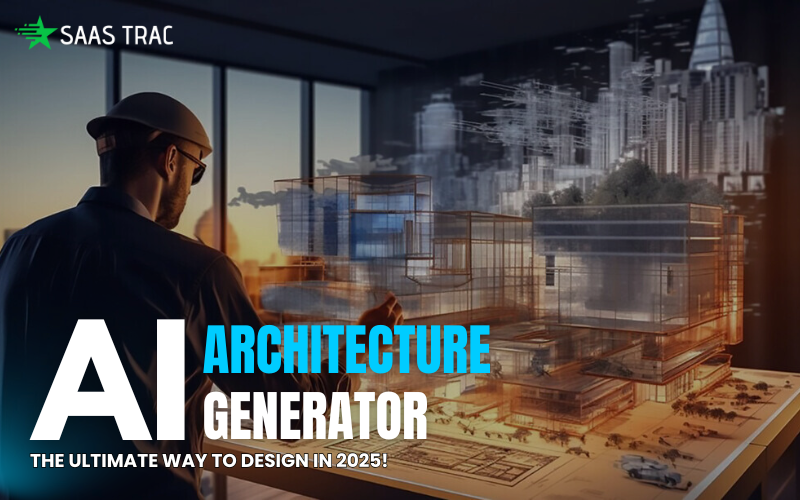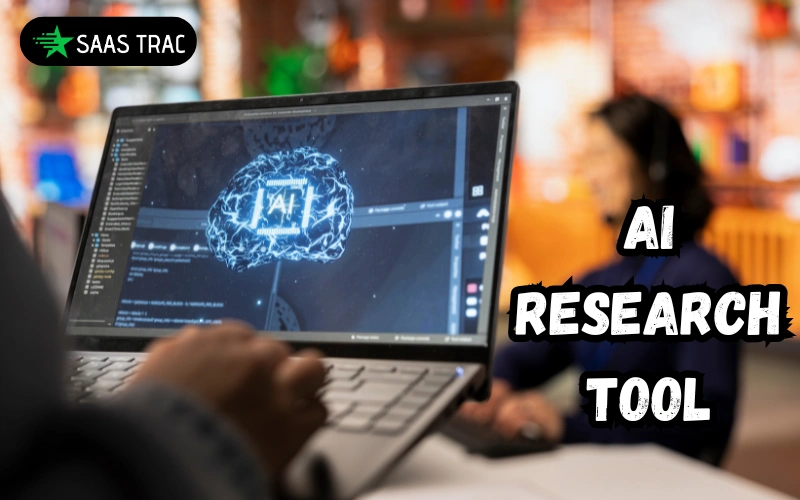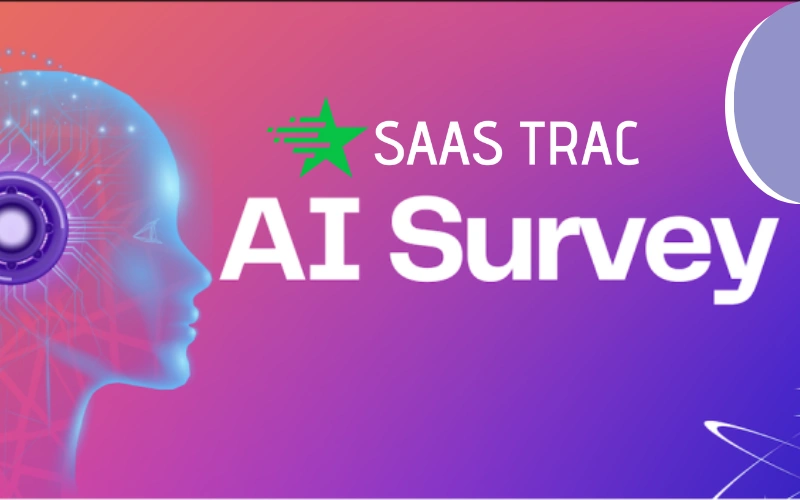It’s 2025, and if you’re working in architecture, you’ve probably noticed how fast things are changing. What used to take days of manual work can now be done in minutes—all thanks to AI. Tools like AI architecture generators are no longer just futuristic ideas; they’re part of our everyday workflow, helping us turn rough concepts into detailed designs faster and smarter than ever before.
From generating eye-catching design concepts to simplifying complex zoning analysis, AI is quickly becoming a game-changer in architectural workflows. In this blog, we’ll break down what AI architecture generators actually do, explore some of the top tools available right now, and explain why they’re worth paying attention to—whether you’re just starting out in architecture or running an established firm.
What Is an AI Architecture Generator?
An AI architecture generator is a tool powered by artificial intelligence that automates and enhances various phases of the architectural design process. These tools use natural language processing (NLP), computer vision, machine learning, and generative models to turn simple prompts into detailed architectural plans, 3D visuals, or feasibility reports.
Whether you input a sentence like “Design a futuristic eco-villa on a coastal cliff” or upload a rough 2D sketch, the AI interprets your vision and produces highly detailed outputs—often within seconds.
This isn’t just digital drawing assistance. It’s a rethinking of how architectural creativity works when paired with computation.
Why Is AI Transforming the Architecture Industry?
The architectural design process, historically a manual and time-consuming task, is filled with repetitive tasks—from modeling and rendering to site analysis and documentation. AI helps tackle these challenges by automating processes that otherwise eat up hours or even days.
Here’s what AI for architecture brings to the table:
- Speed: From weeks to minutes—conceptual designs are created and iterated at lightning speed.
- Precision: Reduce human error with data-driven suggestions.
- Inspiration: Generate alternative design variations that inspire and provoke creativity.
- Efficiency: Automate documentation, compliance checks, and even construction feasibility.
The result? A more empowered architect and a far more intelligent workflow.
4 Key Use Cases of AI Architecture Generators
1. Conceptual Designs from Text Prompts
One of the most captivating uses of an AI architecture generator is creating designs from simple prompts. Tools like Midjourney, Stable Diffusion, and Veras can interpret lines like “Minimalist home with glass façade and greenery rooftop” and output stunning visual concepts.
The integration of these AI tools with platforms like Rhino, SketchUp, and Revit means you can instantly switch between stylistic directions with a few commands.
2. Smart Design Prototyping
Some tools generate 3D models based on 2D sketches or quick inputs. For instance, Kaedim is widely used in ai building design for transforming rough concepts into detailed 3D objects—ideal for prototyping and presenting client-ready visuals in early design stages.
3. Site and Zoning Analysis
Architects often lose valuable time researching zoning regulations, building codes, and site constraints. Tools like Archistar and DeepBlocks automate this process, analyzing GIS data and offering real-time insights on site feasibility. It’s architecture design software that thinks ahead.
4. Automated Reports and Archiving
Tools powered by LLMs (like ChatGPT) help firms with report generation, client proposals, planning applications, and HR documentation. It can even archive firm-specific design methodologies and create custom models tailored to internal standards.
Top AI Architecture Generator Tools in 2025
The growing demand for innovation in design workflows has given rise to a diverse range of AI architecture generator tools. These platforms don’t just accelerate tasks; they redefine what’s possible in modern building design.
Let’s explore the most powerful AI tools, with added details on how each one stands out and supports different stages of the architectural process:
1. TestFit
TestFit is considered one of the most powerful tools for rapid feasibility studies. Its generative algorithms help users evaluate site constraints, building massing, unit mixes, and parking logistics almost instantly. Especially valuable for multifamily and mixed-use developers, TestFit simplifies tasks like yield analysis and deal modeling.
Key Features:
- Integrates with real-time property data
- Offers cost modeling and iteration comparison
- Useful for pre-construction and developer negotiations
2. DimensionX
DimensionX turns a single image into immersive 3D/4D worlds, helpful for conceptual visualization and spatial experience previews.
Key Features:
- AI-powered video diffusion
- Great for mood setting & presentation
- Ideal for early-stage ideation
3. Archistar
Archistar combines geospatial data with AI to help architects instantly understand regulatory constraints like height limits, lot coverage ratios, and setbacks. With its AI for architecture capabilities, it transforms complex zoning maps into visual interpretations, ideal for early-stage planning.
Key Features:
- Built-in compliance checker
- Visualizes developable land and solar access
- Great for both urban planning and real estate firms
4. DeepBlocks
DeepBlocks is a pioneer in combining financial modeling with AI-powered architectural insights. It supports architects and developers by linking zoning data, market trends, and cost modeling into a single dashboard.
Key Features:
- Ideal for real estate feasibility studies
- Supports investment decisions with predictive ROI tools
- Enhances both architectural and financial planning synergy
5. Spacemaker AI
Designed for urban-scale development, Spacemaker AI optimizes building design using environmental data. It calculates wind exposure, sunlight angles, and noise levels, offering layout suggestions that are both sustainable and efficient.
Key Features:
- Environment simulation and scenario testing
- Data visualizations for stakeholder presentations
- Improves urban design in noise-heavy or climate-sensitive areas
6. Kaedim
Kaedim turns flat sketches or drawings into detailed, editable 3D models—making it one of the most creative tools for the early ideation phase. It’s gaining traction among concept architects and design students alike.
Key Features:
- Automatically identifies sketch elements and generates volume
- Reduces modeling workload significantly
- Works with Blender, Maya, and other 3D suites
7. Hypar
Hypar offers a cloud-based platform for generating code-compliant designs. Architects can input project parameters like site size, intended use, and orientation, and Hypar builds compliant layouts using its automation engine.
Key Features:
- Code-aware design generation
- Flexible parametric editing
- Collaborative team workflows with real-time updates
8. Archivinci
Archivinci specializes in the creative end of the design spectrum. It’s great for creating mood boards, presentation decks, and conceptual iterations. The tool is favored by design consultants for high-level creative workshops.
Key Features:
- Design prompt interpretations
- Generates multiple visual options for each concept
- Enhances client engagement in the early design phase
9. ArchVizz
ArchVizz helps architects take static models and turn them into immersive 3D experiences. Whether it’s a walkthrough for clients or a stakeholder review, ArchVizz delivers stunning visuals with minimal input.
Key Features:
- Drag-and-drop 3D asset integration
- Real-time rendering and animation features
- Perfect for marketing, pitches, and approvals
10. Rendair
Rendair is an AI architecture generator free tool that provides basic rendering features through a web interface. It’s ideal for solo architects or beginners who want high-quality renders without investing in expensive software.
Key Features:
- Cloud-based rendering (no local GPU required)
- Converts 2D sketches into atmospheric renders
- Includes lighting and texture presets for quick edits
11. Veras
Veras is a render enhancement plugin that applies AI-powered post-processing to existing 3D images. Think of it as the “Photoshop for architecture,” but with minimal manual work. It’s a huge time-saver for firms producing multiple client visuals on tight deadlines.
Key Features:
- Enhances realism using machine learning filters
- Supports style transfer and material replacement
- Ideal for final presentation-quality output
12. Hunyuan3D 2.0
Hunyuan3D 2.0 generates 3D architectural forms from simple text prompts—useful for massing and early-stage design ideas.
- Text-to-3D modeling
- Supports quick ideation
- Helpful in design exploration
Optional (More General Creative Tools):
- Edify 3D: Can help with rough 3D visualization but not architecture-specific.
- Immersity AI: Best for immersive storytelling, not architectural design.
Whether you’re a solo designer, a mid-size firm, or a global architecture brand, today’s ecosystem of AI tools empowers everyone to create more, think faster, and design better. From rendering to modeling, zoning to storytelling, the modern AI architecture generator handles it all—leaving architects with more time to focus on creativity, sustainability, and design excellence.
Complementary Technologies Powering AI in Architecture
AI doesn’t work in isolation. It thrives when integrated with cutting-edge digital construction and modeling technologies. Let’s look at some that work seamlessly with architecture design software:
- BIM (Building Information Modeling): Digitally manage every part of a building’s lifecycle. When combined with AI, it helps automate repetitive tasks and detect design clashes early.
- AR/VR: Immersive client experiences now allow stakeholders to walk through a project before construction begins.
- 3D Printing: Prototype physical models directly from AI-generated designs, reducing waste and saving time.
- IoT: AI + smart data = intelligent buildings. IoT sensors help optimize HVAC, lighting, and energy efficiency.
Is AI Architecture Design Ethical and Reliable?
As AI becomes a stronger player in architecture, important questions arise:
- Who owns AI-generated designs?
- Can AI plagiarize existing works?
- Should you watermark AI-created renders?
- Can small firms compete with larger ones that have R&D budgets?
While the industry explores these legal and ethical territories, one thing is clear: AI won’t replace architects. Instead, it enhances them. AI democratizes innovation, empowering even smaller firms to match or outperform legacy players.
Benefits of AI Architecture Generators at a Glance
- Faster design cycles
- Better site analysis and planning
- Higher client satisfaction through visuals
- Cost-effective operations
- Streamlined compliance and reporting
- Easy onboarding via free architecture software for beginners
Getting Started: AI Architecture Generator Free Options
If you’re not ready to invest in premium platforms, don’t worry. Many tools offer AI architecture generator free trials or versions:
- Rendair and Kaedim offer freemium access
- ChatGPT plugins + Midjourney can be integrated for text and image workflows
- DALL·E offers free credits for image-based design generation
These tools make powerful AI accessible to anyone—from students to solo designers and growing firms.
Conclusion: The Blueprint of the Future is Here
The rise of the AI architecture generator is more than a trend—it’s a complete shift in how we build, design, and innovate. It allows for data-backed decisions, optimized workflows, and limitless creativity. Whether you’re an established firm or a student exploring free architecture software for beginners, the time to embrace this technology is now.
With tools getting smarter, faster, and more integrated every day, architects are no longer confined to traditional methods. The drafting table is going digital. The future is not just being designed—it’s being generated.
FAQs: –
Q1. Can I use an AI architecture generator for free?
A: Yes, some tools like Rendair and DALL·E offer AI architecture generators free versions or trials.
Q2. Is AI useful in building design?
A: Absolutely. AI building design tools speed up workflows, reduce errors, and enhance creativity.
Q3. What’s the best AI architecture generator in 2025?
A: Top tools include TestFit, Archistar, Kaedim, and Veras, each excelling in different design tasks.
Q4. Is AI replacing architects?
A: No. AI supports architects by automating tasks—enhancing creativity, not replacing it.










